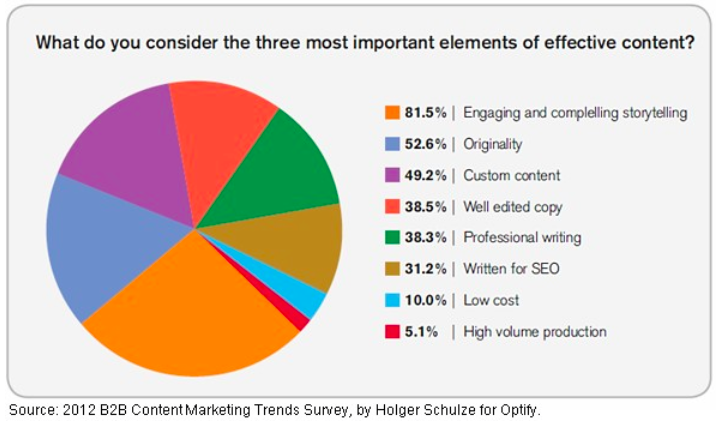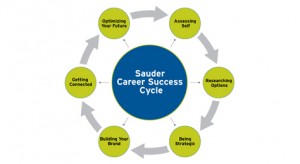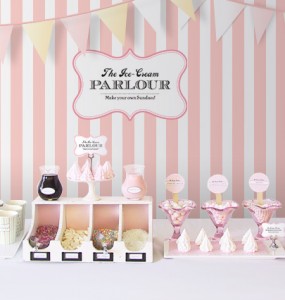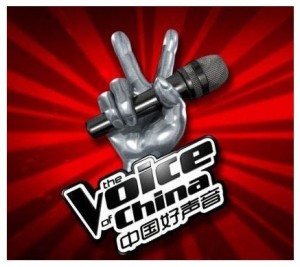The post Have we lost the art of storytelling in marketing? in “Drew’s Marketing Minute” discussed the effectiveness and customers’ emotional connection of storytelling advertisements. According to the chart below, 81% of respondents listed compelling storytelling as one of the three most important elements of effective content.
Drew raised several questions about the effectiveness of this sort of advertisements in current years and how people will react to the stories. As an audience, I think storytelling advertisements do a great job in eye-catching and could easily arouse customers’ interest in the products because it is usually telling a story based on the context that potential customers will face, and show the action and result in a warm, humours or other impressive way. However, it may be hard to call for the action in a storytelling advertisement because commercial information that will not affect the plots or the atmosphere of the story is hard to design. Also people could be easily fed up with the repeating plays because they may already know every word the characters are going to say in the same 10-15 seconds advertisement. Catching audience’s attention based on the curiosity is great and exciting, but curiosity disappears fast, it is not something that the storytelling advertisements should depend on, for example, surprising ending or exciting plots. Advertisers should think in a more creative way in order to maximize the effectiveness and lower the costs of the storytelling advertisements.
I would like to share one of the most successful storytelling advertisement I think and highlight its strong points. (It is a Wrigley’s Extra advertisement in Chinese, I cannot find a video with English subtitles, enjoy it if you understand Chinese.)

The advertisement is a mini firm and has four parts named “SOUR, SWEET, BITTER, AND SPICY”. It tells a story about a couple of lovers and four versions are released one by one in a year. Gui Lunmei and Peng Yu’an, who are popular actors among young people, starred in the story. The story associate tightly with the positive image of “EXTRA”. This storytelling advertisement enjoys great popularity by interesting stories, lovely actors, and the appealing plots. As for the social media, my friends and I are sharing this advertisement on the Chinese Facebook, the story was shared for thousands of times. This eight minutes long firm advertisement is really appealing to the young people market and achieved great success in social media channel.







